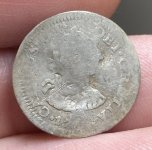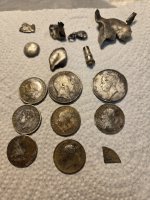Nitric
Silver Member
I'm looking at the Geology Maps for my state. And I'm wondering...... How accurate are the lines that separate each zone(?)? or even the fault lines? Is this different on map era, or is there a set distance of error? How does that work.
How accurate are the lines that separate each zone(?)? or even the fault lines? Is this different on map era, or is there a set distance of error? How does that work.
To give a quick example...I use Land matters, go to the state geology, blow up the map, down to where I see may street, and the line goes through the neighborhood according to the map. how much of a transition area is accounted for? Or is that line where it is? Or could that line be 100 yards off, half mile off, etc.....where that line is,is a ravine, or roll in the land which is really cool, if the map is that accurate.
Was just really curious how that worked...Again, Still kind of new to even a little understanding of how to read that. And sorry if this has already been asked or explained!
Also, What I'm trying to do is look at what the geology map says, then go to a local area and find an example, Just so I have something to see. This area is mixed with all kind of little things, a lot of white and clear quartz too. Your kicking the stuff out of the way at times so you don't hit it with the mower.I spend more time looking at rocks that work to the surface than actually mowing
 How accurate are the lines that separate each zone(?)? or even the fault lines? Is this different on map era, or is there a set distance of error? How does that work.
How accurate are the lines that separate each zone(?)? or even the fault lines? Is this different on map era, or is there a set distance of error? How does that work. To give a quick example...I use Land matters, go to the state geology, blow up the map, down to where I see may street, and the line goes through the neighborhood according to the map. how much of a transition area is accounted for? Or is that line where it is? Or could that line be 100 yards off, half mile off, etc.....where that line is,is a ravine, or roll in the land which is really cool, if the map is that accurate.
Was just really curious how that worked...Again, Still kind of new to even a little understanding of how to read that. And sorry if this has already been asked or explained!
Also, What I'm trying to do is look at what the geology map says, then go to a local area and find an example, Just so I have something to see. This area is mixed with all kind of little things, a lot of white and clear quartz too. Your kicking the stuff out of the way at times so you don't hit it with the mower.I spend more time looking at rocks that work to the surface than actually mowing

Amazon Forum Fav 👍
Last edited:
Upvote
0


 , even the width of the pen tip used by the map maker could throw the map feet, yards or even miles off depending on the scale, plus the original survey could be wrong too!
, even the width of the pen tip used by the map maker could throw the map feet, yards or even miles off depending on the scale, plus the original survey could be wrong too!



